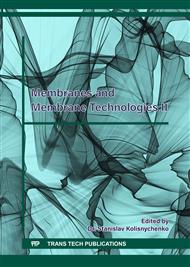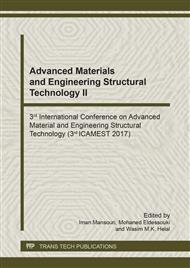p.59
p.65
p.75
p.80
p.85
p.90
p.95
p.100
p.106
Preparation and Characterization of the Hydrophilic Polysulfone Ultrafiltration Membrane
Abstract:
In this study, the certain chloromethylated polysulfone ultrafiltration membrane (CMPSF) was prepared via nonsolvent-induced phase separation (NIPS) method. Then the hydrophilic monomer was grafted on the CMPSF membrane through quaternary amination reaction. The structure of membrane was characterized by Fourier transform infrared and the properties were measured by pore size, contact angle and membrane water flux. The contact angle test results show that the hydrophilic performance of the membrane is improved due to the grafting modification. Meanwhile, water flux has a tendency to decrease with the increase of the reaction time due to the decrease in pore size. This indicates the rejection of membrane will be improved.
Info:
Periodical:
Pages:
85-89
Citation:
Online since:
March 2018
Authors:
Keywords:
Price:
Сopyright:
© 2018 Trans Tech Publications Ltd. All Rights Reserved
Share:
Citation:



